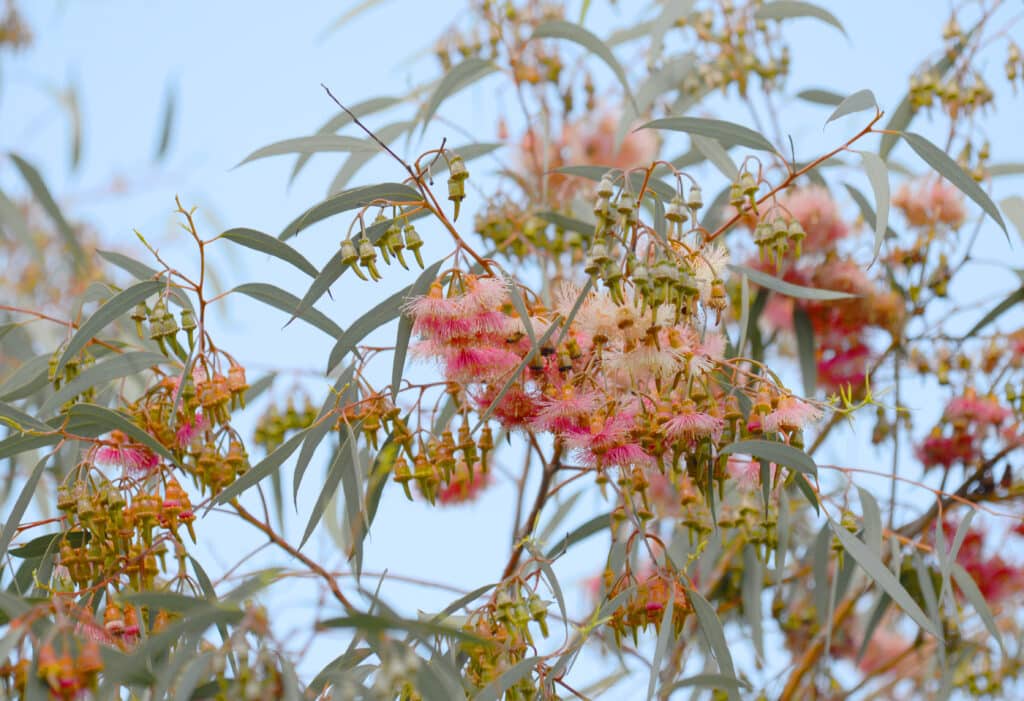Menu
Opening Hours: 9am-5:30pm, Every day except closed on Christmas Day and Boxing Day.
Opening Hours: 9am-5:30pm, Every day except closed on Christmas Day and Boxing Day.

PLANTING TREES FOR THE FUTURE
It is generally agreed that planting trees is an important way we can care for the environment.
• Trees provide welcome shade, modifying our harsh climate.
• They maintain clean, oxygen rich air, counteracting the polluting effect of cars, fires and industry.
• Birds and animals visit our gardens for the food and shelter they find in trees.
THE FRAMEWORK OF THE GARDEN
As trees form the framework of your garden, and mistakes are difficult and costly to correct, careful choice is essential! Consider these factors:
• Avoid planting trees which drop limbs near buildings and car parking areas.
• Say no to trees with poisonous berries or other parts, especially if you have small children visit your garden.
• Falling leaves can cause a fire hazard, litter the pool and block the gutters. Plant deciduous or large gum trees away from the house.
• Some Eucalypts grow to over 20 metres and are unsuitable for suburban blocks. The SEC may require you to prune to control the height near power lines.
• Large trees may produce too much shade for lawn and other garden plants.
• Some tree roots are invasive and may damage underground pipes, or lift paving.
• If planting near your boundary, check with your neighbours to avoid future misunderstandings!
• Soil type – consider these factors: clay or sand, water availability and wind strength will affect tree growth. Choose species to suit your conditions.
• Choose the shape of the tree to suit. You may prefer a wide crown, a narrow tall tree, a weeping tree, or perhaps low branching.
SUCCESSFUL PLANTING
Follow these steps to guarantee successful tree planting:
We love your feedback, please review us on Google

“Zanthorrea Nursery has been an accredited nursery and garden centre for many years, and is active in supporting Greenlife Industry Australia and the Nursery and Garden Industry of WA”
